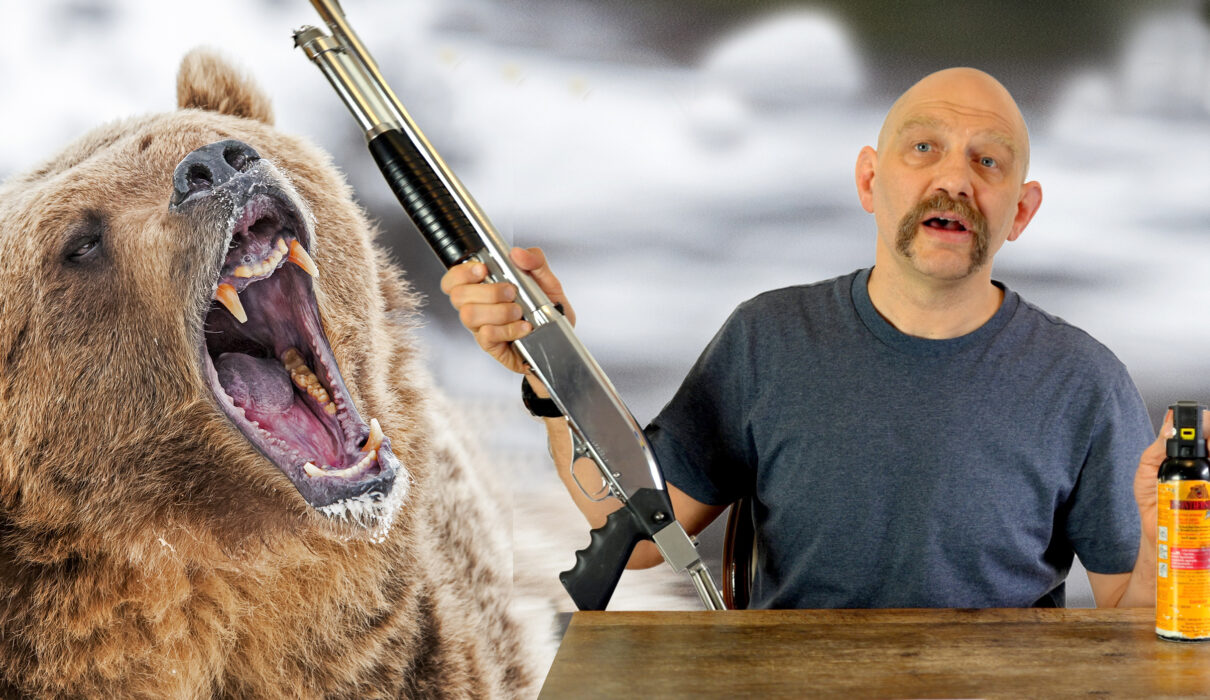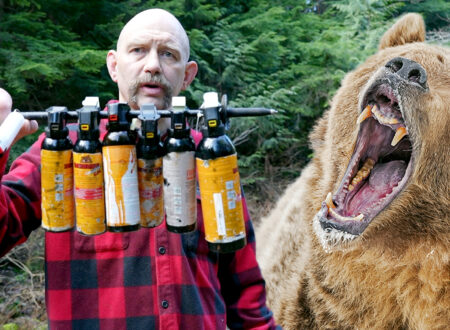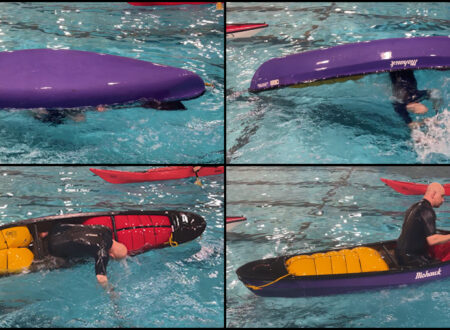I was working as a guide in the Yukon the summer some French tourists went hiking in Kluane National Park, saw a grizzly bear, and pulled out the bear spray. They then proceeded to spray themselves with it, thinking that it worked like mosquito repellent spray. On the plus side the bear decided to ignore them, but the downside was that they ended up being medevaced to a hospital.
Hopefully most of my readers aren’t French and know to shoot the spray towards the bear!
If you’re going into bear habitat you should carry some form of protection or deterrent. Traditionally this has been a firearm, but bear spray is a lot lighter and more compact than most guns (and is a lot less likely to kill a kid who plays with it by mistake).
But how well does bear spray actually work against actual aggressive bears?
To answer this question I found four studies that looked at the relative efficacy of bear spray vs firearms. This included 352 documented aggressive bear encounters in Alaska with black, grizzly and polar bears.
I then filmed a video (below) to summarise the findings of this research. The results may surprise you, but as the younger generation likes to say, facts don’t care about your feelings.
If you come across any other studies that I’ve missed please send them to me – I’m not pro or anti-gun, but as a trained biologist I’m definitely pro-data!
Bear Spray vs a Gun – Video Format
TIMESTAMPS AND SOURCES
01:28 – Introduction to bears spray vs guns
04:08 – Analysis of the first report, Bear Spray vs Bullets, Which Offers Better Protection, by the US Fish and Wildlife Service.
04:30 – Analysis of second report, Bear Spray or Bullets, by Lynn Dickerson
08:57 – Analysis of third report, Efficacy of Bear Deterrent Spray in Alaska, by Smith et al.
16:48 Analysis of fourth report, Efficacy of Firearms for Bear Deterrence in Alaska, by Smith et al.
23:27 Summary and personal opinions
Bear Spray vs a Gun – Audio-Only Format
I also published this discussion as episode 403 of The Strenuous Life Podcast available on
- Apple Podcasts
- Spotify Podcasts
- And most other podcast players
Here’s that episode as an embedded audio player format:
Key Takeaways from 4 Studies and 352 Aggressive Bear Encounters
- Based on four different studies, bear spray was about 90% effective at dissuading aggressive bears compared to firearms which were only about 80% effective
- When firearms failed to protect people it was because there wasn’t sufficient time to respond to the bear, mechanical issues, the bear was too close for deployment, the shooter missed the bear, the gun was empty, or the shooter tripped and fell while trying to use the gun.
- There is no evidence that bear spray makes bears angrier or more aggressive
- Wind interfered with about 7% of bear spray incidents, but most of the incidents happened in sheltered wooded or shrubby areas. Above the treeline wind might be a more significant factor
- Surprisingly, aggressive bear behavior was equally likely to be stopped by the use of long guns and handguns
- Bear spray works on black, grizzly/brown, and polar bears
- Aggressive females with cubs were much less likely to be dissuaded by firearms
- Applying bear spray to an object or area that you wish to protect is a bad idea because bears can be attracted to the residual smell
In summary I’d like to say that the data presented in these studies makes me more confident that taking bear spray is usually the right choice when you’re in bear country. However in windy conditions, above treeline, or in polar bear habitat I’ll probably continue to bring both bear spray and my 12 gauge Winchester Marine shotgun.
I encourage you to watch the entire video or – better yet – read the four studies that I linked to at the top of the page for yourself.
More Outdoor Resources by Stephan Kesting
Please like this video and subscribe to my Essential Wilderness Youtube channel here.
Follow my outdoors account @EssentialWilderness on Instagram
Sign up to get notified about my upcoming book, Perseverance, Life and Death in the Subarctic, by clicking here.
Thanks so much,
Stephan Kesting







